| |
| Architectural Models 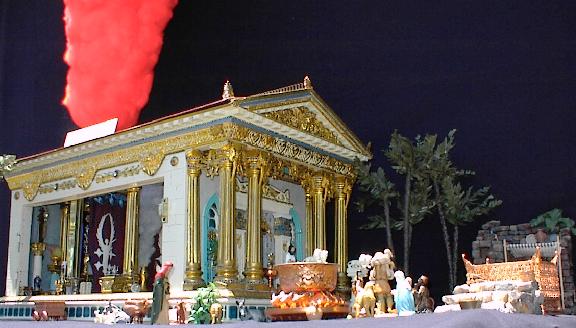
Mount Moriah, in the days of Abraham, was one of the hills in the vicinity of Salem, the one chosen by Abraham upon which to sacrifice his
only son Isaac "as a burnt offering" unto the Lord. In later years it came under the control of the Amorites, whose principal city, Jebus, occupied a hill westward from Moriah.Genesis 22: 2. In the days of King David, who subdued the Jebusites, it became a part of the city named Jerusalem. It is 14 1/2 miles from Jordan, 15 miles from Salt Sea, and 41 miles from the Mediterranean. The location was not the most desirable one on which to erect the Temple, but was chosen by Solomon because of its sacred associations. It was fitting that the great Temple to be dedicated to the God of his fathers should be erected upon the very spot where Abraham made manifest that faith in Him which was accepted ever after by the children of Israel and the world. On this spot also, where Abraham offered Isaac, David made an acceptable offering unto the Lord, and by faith saved Jerusalem from destruction. David no doubt realized the significance of the name given to the Mount by Abraham, "Jehovah Sees," and ever after the children of Abraham found consolation in the thought, "In the Mount of Jehovah He will be seen." Solomon, in deciding to erect the Temple upon this sacred spot, fulfilled the wishes of his father, King David, and of all in whose breasts these sentiments were cherished. "Beautiful for Situation, the Joy of the whole Earth." 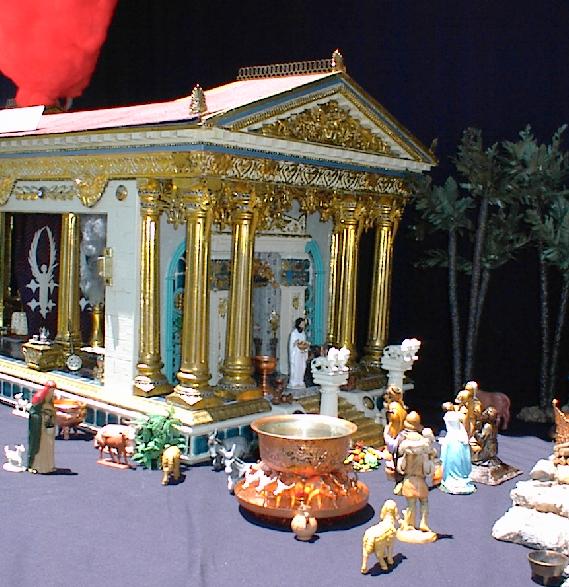
Architecture of the Temple
The assemblage of the world's architectural genius at Jerusalem,and the amassed store of materials of gold, silver, brass, iron, granite, and marble, together with the precious stones and costly woods and fabrics brought from foreign shores, resulted in a structure distinctive in design, gigantic in proportions, and glorious in embellishments, the like of which Israel and the people of that day had never before seen, and which will never again be equaled, much less excelled. The Temple and the Palace together, as a unit, consisted of a series of terraces round about Mount Moriah, the highest point of which was crowned by the Great Porch, with the Holy and the Most Holy Place. The second highest terrace, surrounding the Mount, was an oblong or
rectangle, 1,600 feet long and 800 feet wide, having a retaining wall rising from the base of the Mount to a height of from 80 to 240 feet as conditions required for support, for defense, and to produce a uniform raised level about the Mount. Within this first enclosure the architects provided homes for the porters and singers, as well as havens for the worshipers. The upper terrace was 800 feet long and 400 feet wide, surrounded by a retaining wall of great stone. The eastern half of this second enclosed terrace or court was embellished by three rows of hewed stones or pillars, round about, forming a colonnade and supporting an entablature of cedar beams and costly stones. The Covert for the King was located on the north side and was of solid brass. In the western half of this oblong enclosure, and on the north side, was the Court for the women, surrounded by high walls and enclosing a series of chambers suitably arranged. To the south was the Court of the Priests, containing the chambers for those who were actively engaged in the Temple services. In the center of the western half of the great court was the inner court, 400 feet by 200 feet in size, in the form of a rectangle, surrounded by a cloistered colonnade of three rows of pillars supporting a beautiful entablature of cedar beams and costly stones. The only entrance to the inner court was through the Great Gate on the eastern side. In the center of the eastern half of the inner court stood the Great Altar of Burnt-offering. In the southeast corner was the Molten Sea, and on the north and south sides, five on each side, were the Lavers. The western square of the inner court contained the House, or Holy and Most Holy Places, surrounded by a series of chambers. The approach to these sacred precincts was through the Great Porch, rising to a height of 240 feet. These crowning terraces which supported the Temple and King Solomon's Palace or Citadel, including his house, the House of the Forest of Lebanon, the Queen's Palace, the Porch of Pillars, and kindred structures, were surrounded for the sake of security by a wall which began at the bottom of the Mount. Some of the sides of this wall were reared 280 feet in height before they attained the desired level, and these massive and curious bases, together with the super-structure, formed an impressive prospect, which was the marvel of all beholders. 2 Chron. 3: 4. Approaching the Temple terraces from the southwest was a road leading through a gate into the great citadel, within the walls of which were the numerous buildings. The citadel was on an elevation just below that of the Temple, and visitors to the latter had to pass through the former. Here were the King's Palace, the House of the Forest of Lebanon, the Porch of Pillars, the Queen's Palace, the Tower of David, the Palace of the Captain of the Host, the Palace of the High Priest, and the Judgment Seat or Throne. Within this same enclosure were to be found the homes of the Royal Harem, and of the immediate official family and attendants. Here also were the Royal Gardens in which were to be found a great variety of trees and beautiful shrubbery, and enclosures for wild and domestic animals and birds.
The King's Palace, the House of the Forest of Lebanon, and the other
royal buildings were of a size and magnificence such as Israel had never seen before, and were prized because they reflected the high political rank of the nation, as the Temple reflected the glory of its religious institutions. The road from the southwest gate ran diagonally northeastward to a central square which was dominated by the Tower of David. At the south of the square was the Court of Guards, at the west of the Queen's Palace, and at the east the Palace of King Solomon. 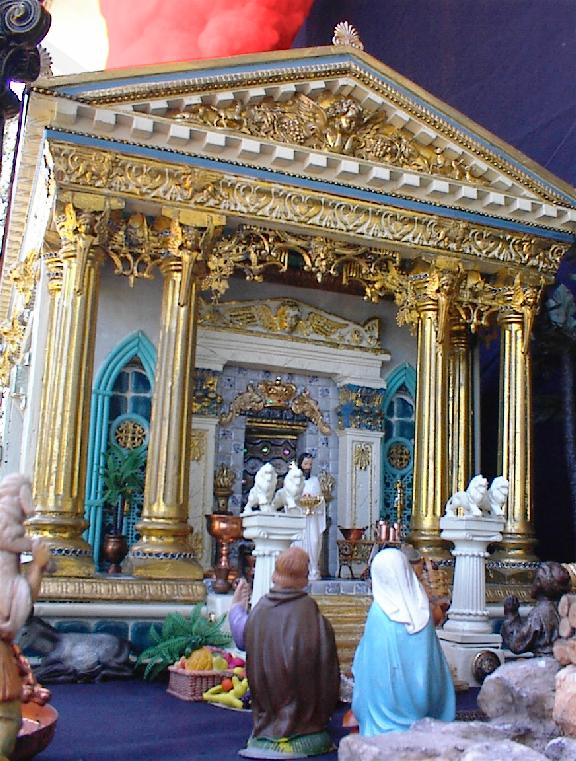
The Inner Court of the Temple
The avenue from the southwest gate of the citadel, having passed the
Palaces, the Porches, and the House of the Forest of Lebanon, proceeded again northeastward to an open space before the House of the High Priest, where there was a gate leading upward to the Forecourt of the Temple. This outer court occupied the whole of the eastern half of the Temple terrace, and on its northern side was the great brass Covert for the King. At the western side of the Forecourt was the gate to the Inner Court, whence rose the facade of the Temple itself.
The Altar of Burnt-Offering
In the center of the eastern half of the inner court stood the most
indispensable part of the apparatus of worship, the Altar of Burnt-offering, made of brass, "twenty cubits in length, twenty in breadth and ten cubits in height" (40 feet long, 40 broad, and 20 high). 2 Chron. 4: 1.
The Molten Sea
The inner court, the southeast corner, stood the most striking of the
creations of Solomon's Phoenician artist, Hiram of Tyre. This was the
Molten Sea. It was a large circular tank of bronze, "thirty cubits in
circumference, ten cubits in diameter and five cubits in height" (60 feet
around, 20 feet across, and 10 feet high), with a brim the thickness of a
handbreadth. These measurements show that Hiram understood the principles of circular form and construction. This great sea rested on the backs of twelve bronze bulls which, in groups of three, faced the four cardinal points. 1 Kings 7: 23-27; 2 Chron. 4: 2-5.
The Lavers
There were ten Lavers of brass raised on bases resting upon wheels.
They were used for washing the animals to be sacrificed in the
burnt-offering and in the general cleansing of the court after the
services. Each one was "four cubits long, four cubits wide and three cubits high" (8 feet by 8 by 6). The Lavers, bases, and wheels were highly ornamented, and symbolically embellished with lions, oxen, cherubim and palm trees. Five of the Lavers stood on the north side of the inner court and five on the south side. 1 Kings 7: 27-39. 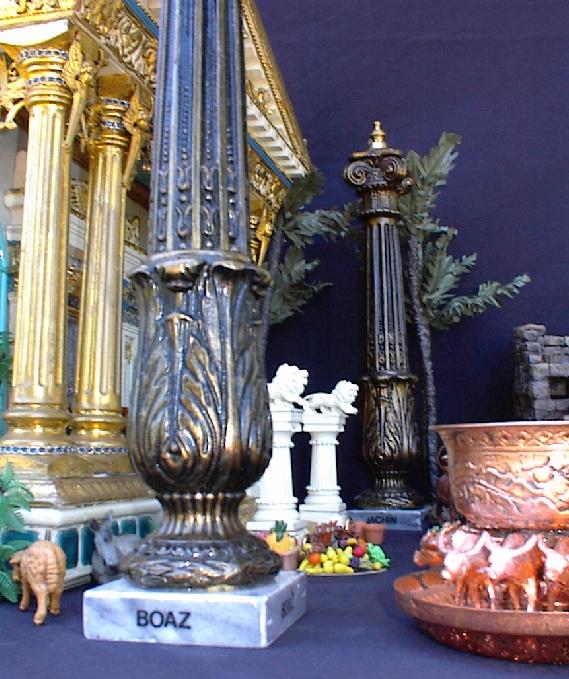
The Great Porch
The Great Porch was a monumental structure "one hundred and twenty cubits high" (240 feet), built over the entrance to the Sanctuary. This entrance or vestibule was "twenty cubits long and ten cubits broad" (40 feet by 20). Through this porch the priests were admitted to the Sanctuary. 2 Chron. 3: 4; 1 Kings 6: 3.
The Two Pillars of Brass
These two great bronze shafts, standing in relief, formed an important feature in the architecture of the Temple. Each one was "thirty-five cubits high and twelve cubits in circumference" (70 feet high and 24 feet in circumference). They were highly ornamented by a network of brass, overhung with wreaths of bronze pomegranates, each row containing one hundred. Upon the pillars and the top of the chapiters were pommels (great bowls or vessels for oil) over which were hung, festoon-wise, wreaths of pomegranates, interspersed here and there with lily work. They bore the names of Jachin and Boaz and were placed in front of the porch leading to the Sanctuary. 2 Chron. 3:15; 1 Kings 7: 15-22; 2 Chron. 4:12-13. 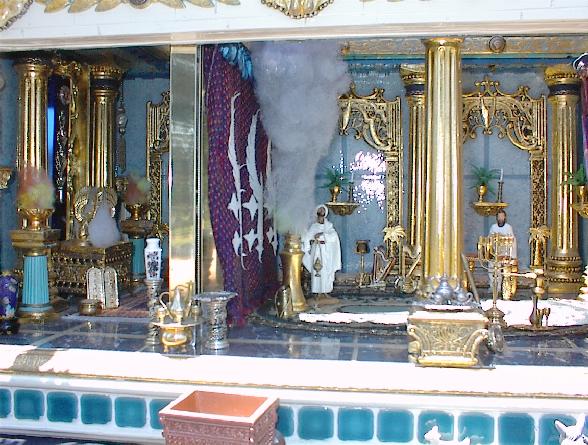
The Holy Place
The Holy Place, or Greater House, was a double cube "forty cubits long, twenty cubits wide, and twenty cubits high" (80 feet long, 40 wide, and 40 high), "ceiled with fir tree," overlaid with fine gold and settings of palm trees and chains, with engraved cherubim on the walls. The entire house was garnished with precious stones for beauty. The entrance to the house was by a large double door, two leaves to the one door and two leaves to the other, of olive wood, carved with cherubim, palm trees, and open flowers, all overlaid with pure gold. The furniture of the Holy Place consisted of ten candlesticks of pure gold, five on the right side and five on the left, together with their lamps and snuffers; also ten tables with pure gold, five on the right side and five on the left, together with their bowls, basins, spoons, and covers. To these must be added the golden altar of incense and its censer, the table of shewbread, and the golden candlestick of the Tabernacle, all harmoniously arranged within the walls, ceilings, and floors of gold set with precious stones. 1 Kings 7: 49; 2 Chron. 4: 8. The Most Holy Place
The Holy of Holies was a perfect 40 foot cube "twenty cubits broad, twenty cubits long, and twenty cubits high." All the walls round about were carved with figures of cherubim, palm trees, and open flowers, all overlaid with pure gold; even the floor was overlaid with gold, and all was garnished with precious stones for beauty. The two doors leading to this Most Holy Place were of olive wood, cunningly carved with cherubim, palm trees and open flowers, and overlaid with pure gold. Each door had two leaves which folded. Over this entrance hung the veil of blue, purple, and crimson of the finest fabric, cunningly wrought with cherubim, palm trees, and open flowers. This beautiful tapestry defined the entrance to the Oracle. The only piece of furniture in the Most Holy Place was the Sacred Ark of the Covenant of the Lord, containing the testimony. This was the place within the oracles shadowed by the wings of two gigantic cherubim of olive wood, overlaid with pure gold. Each cherubim was "ten cubits high" (20 feet) with an outspread of wings of "twenty cubits) (40 feet). 1 Kings 6:23.
The Temple and Eternity
King Solomon's Temple was the perfect architectural expression of the religious faith of a people. As such, it has never been equaled in the history of the world, much less excelled. Its actual life was short, but is influence has been incalculable. Built to endure for centuries, only a few years elapsed before it was desecrated and then completely destroyed by invading armies. Yet its fame did not die. The children of Israel, with fervid determination, rebuilt it twice, and twice more it was destroyed. The descendents of its builders were scattered far and wide over the face of the earth, but the traditions of their labor and their unity and their accomplishment have remained to inspire all subsequent ages, and the magnificence of the Temple they built is still acknowledged as the epitome of gorgeous architecture. 
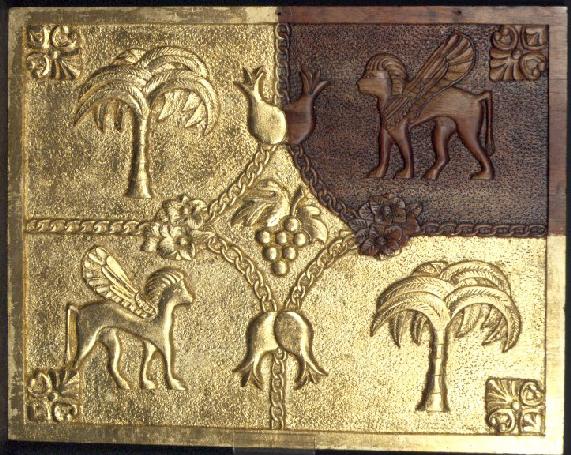
The Interior Walls of King Solomon's Temple 1 Kings 6:18, 21, 35 18 And the cedar of the house within was carved with knops (almonds) and open flowers: all was cedar; there was no stone seen. 21 So Solomon overlaid the house within pure gold: and he made a partition by the chains of gold before the oracle (ark); and he overlaid it with gold. 35 And he carved thereon cherubim's and palm trees open flowers: and covered them with gold fitted upon the carved work. 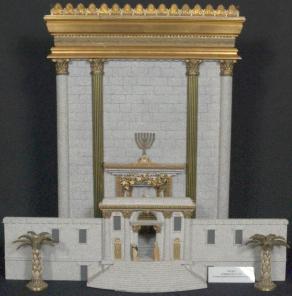 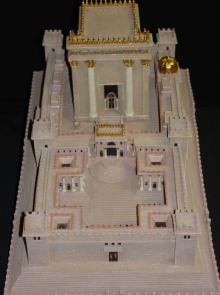
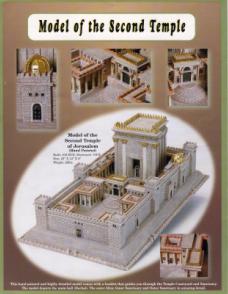 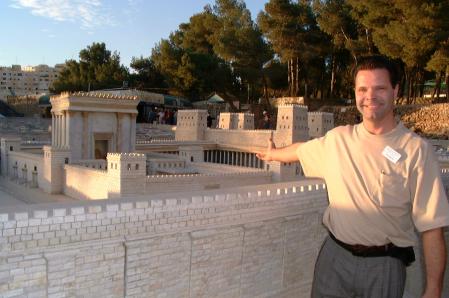

|












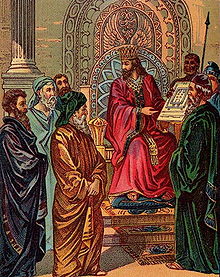
ปล. อยากให้ข้อคิดพุทธศาสนิกชนนะครับ
พระพุทธเจ้าได้บอกไว้ว่า เทวดามีมาก่อนที่จะมีมนุษย์
ซึ่งหมายความว่า เรื่องของวิญญาณเป็นเรื่องจริงมากกว่าเรื่องฝ่ายวัตถุที่เราอยู่ เพราะเกิดขึ้นที่หลังครับ
พอผมเข้ามาเชื่อดูสัก 2 เดือน แบบทำใจไว้ก่อน เพราะว่าผมลองมาหลายวิธี ก็ไม่สำเร็จ
ปรากฏว่าทำสำเร็จ และเจอสิ่งอัศจรรย์หลายอย่าง
ผมเข้าใจเลยว่า ทำไมการต้องการเผยข่าวเหล่านี้ให้ผู้อื่นรู้
ที่แท้ ก็พิสูจน์ได้ด้วยตัวเอง และอยากบอกให้คนอื่นรู้ถึงข่าวดีนี้
ผมศึกษาพระคัมภีร์ และรู้ว่าในพระคัมภีร์นี้ถูกต้องไปแล้ว 99%
แล้วอีก 1% ไม่ใช่ว่าผิด แต่มันยังไม่เกิดขึ้น ซึ่งเป็นสิ่งที่ชวนคิดครับ
ปัจจุบันผมก็เพิ่มเป็นผู้เชื่อใหม่ และยังไม่ค่อยรู้อะไร หากมีข้อผิดพลาดขอแก้ให้ด้วยนะครับ
แล้วใครเป็นกษัตริย์ผู้ครองสวรรค์ ใครเป็นผู้ควบคุมเหล่าผีทั้งหลาย ผมก็มานั่งคิด
ชาวคริสต์เคยบอกผมไว้ว่า ผู้ครอง และสร้างสวรรค์ ก็คือพระเจ้าเนี้ยแหละ
ผมก็อยากรู้ว่า พระเจ้าสร้างเรามาเพื่ออะไร เขาก็ตอบว่า เพื่อนมัสการ
มานั่งคิดดู ไม่มีสัตว์ตัวไหนบนโลก ที่มากราบไหว้เคารพสิ่งศักสิทธิ์
มีแต่มนุษย์เนี้ยแหละ ที่แสวงหาสิ่งกราบไหว้ แต่เพราะไม่เห็นพระเจ้าผู้เป็นวิญญาณ
จึงไปกราบไหว้สิ่งที่เห็นด้วยตาคือ รูปเคารพ สิ่งที่แปลก ๆ สัตว์แปลก ๆ เพราะเราไม่ได้มีปัญญาอย่างพระพุทธเจ้า
สังเกตุได้จากงานศพ ที่ชาวพุทธเอาไปเผา (ไฟ) กลายเป็นควันลอยไป (ลม) นำเศษกระดูกไปลอยอังคารส่วนหนึ่ง (น้ำ) และฝังหรือเก็บไว้ (ดิน)
ผมเลยรู้ว่า จริง ๆ แล้ว พระพุทธเจ้า ก็ได้บอกว่าจะมีผู้มาหลังเรา เป็นพระเมสิยา ให้ตามผู้นั้นไป แต่เราชาวพุทธคิดว่า จะมีพระพุทธเจ้าอีกองค์ และยังไม่มา
คิดให้ดี พระพุทธเจ้าไม่ได้บอกว่าจะมีพระพุทธเจ้ามาอีกองค์ และไม่ได้บอกว่าจะเกิดที่เดียวกัน ผมก็เพิ่งนึกได้เนี่ยแหละ
พระพุทธเจ้าสอนแต่ ทำดีได้ผลดี ทำชั่วได้ผลชั่ว รู้ถึงนรก สวรรค์ ฝ่ายวิญญาณ
สุดท้ายผมลงด้วยหลักคำสอนของพระ พุทธเจ้าตรง ๆ ผมจึงรู้ว่า พระพุทธเจ้า บอกว่าทำดีได้ดี ทำชั่วได้ชั่ว แต่ไม่ได้บอกเคล็ดลับในการที่ผม หลงไปกับสิ่งชั่ว และจะเลิกในอบายมุขพวกนี้ได้ไง ถึงแม้ว่าอยากกลับใจ กลับคิดซะว่า ถึงไงเราก็ชั่วแล้ว ก็ชั่วไปเลยละกัน เพราะท้อใจ
พอผมมารู้เรื่องพระเจ้า ที่สร้างมนุษย์จากผงคลีดิน และถ่ายลมปราณ ผมรู้เลยว่าจริง
เพราะร่างกายมนุษย์เป็นภาชนะดิน ของเหลวในร่างกายเป็นน้ำ ลมคือลมปราณ ไฟคืออุณหภูมิในร่างกาย
ผมยอมรับนะครับว่าความชั่วต่าง ๆ ผมไม่สามารถละ เลิก และทำได้ทุกข้อ
ในขณะที่อยากจะทำ แต่ก็ทำไม่ได้
เพราะสภาพแวดล้อมที่ผมได้เกิดมา มันสอนให้ผมเป็นอย่างงี้ไป
ผมได้ออกค้นหาสิ่งเหล่านี้ ไปอยู่พุทธ ลัทธิชินโต
อย่างเก่งก็แค่ได้สัมผัสวิญญาณ แต่ไม่ใช่แนวทางการกลับใจ
ไปอยู่พุทธลัทธิเต๋า กินเจ ไปอยู่ศาลต่าง ๆ ก็ไร้ประโยชน์ พอรักษาศีลแล้ว ความต้องการกลับมากกว่าเดิมหลังจากออกมาเผชิญกับโลก
พระพุทธเจ้าพูดทิ้งไว้ว่าสิ่งใดผิด สิ่งใดถูก ด้วยเหตุ และผล
แต่พระสงฆ์ และผู้คน ที่ไม่ได้มีปัญญาอย่างพระพุทธเจ้า
ถูกหลอกไป แม้ขนาดสื่อต่าง ๆ ก็สามารถชักนำจิตใจไปได้
พระพุทธเจ้าไม่ได้สอนให้สร้างรูปเคารพ ไม่ได้สอนให้มีพิธีสะเดาะเคราะห์
สิ่งเหล่านี้ เป็นสิ่งที่มารมันคิดให้เราทำ และสืบต่อเนื่องมาจากบรรพบุรุษ
คริสเตียนเขาไม่ได้ต้องการเผยแพร่ศาสนา แต่เขาเหมือนผู้ประกาศข่าว
เรายอมรับหรือเปล่า เป็นเรื่องของเราอีกที ถ้าเราเป็นศาสนาพุทธที่ใจกว้าง
ก็อย่าได้เดือดเนื้อร้อนใจในสิ่งนี้เลย
ในพุทธประวัติ คุณคงรู้อยู่ว่ามีมารที่มายุแยงให้พระพุทธเจ้าไม่ให้ออกบวช โดยให้ข้อเสนอนั้นคือ ถ้าไม่ออกบวชจะเป็นกษัตริย์ที่ยิ่งใหญ่ทั้ง 4 ทวีป พูดง่าย ๆ คือเป็นใหญ่ในโลกนั่นเอง แต่พระพุทธเจ้ามีปัญญาเป็นอาวุธ และไม่หลงกลต่อมาร
ในขณะเดียวกันนั้น หลังจากที่มารได้ขอเชิญพระพุทธเจ้าปรินิพพานแล้ว พระพุทธเจ้าก็บอกว่าจะปรินิพพานใน 3 เดือนข้างหน้า
สุดท้ายแล้ว เมื่อพระพุทธเจ้าปรินิพพานไป มารก็ยังดำรงอยู่ในโลกใบนี้
ส่วนพระพุทธเจ้าได้ดับไป และไม่อยู่แล้ว เหลือทิ้งไว้เพียงคำสอนที่ดี
เพลงนี้ต้องการสื่ออะไรกันแน่ ต้องการจะบอกว่า ขอพระเจ้าโปรดเมตตาให้คนไทยตาสว่างและมองทะลุภาพลวงตาที่ราชวงศ์สร้างมาเกือบ 65 ปี หรือต้องการเผยแพร่ศาสนา ให้คนไทยตาสว่างและเปิดหัวใจรับพระเจ้า ถ้าเป็นอย่างแรกก็น่าสรรเสริญพระเจ้า แต่ถ้าเป็นแบบหลัง ก็แล้วแต่ศรัทธาและความเชื่อแล้วกัน